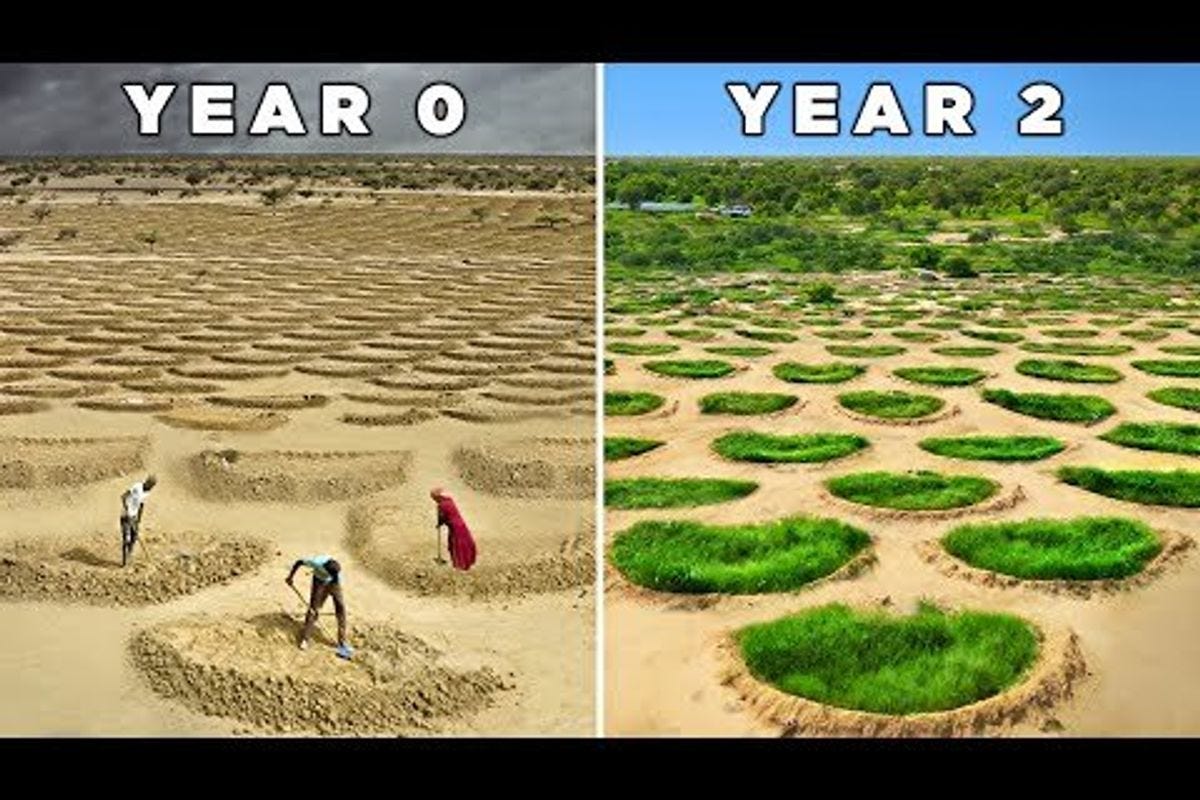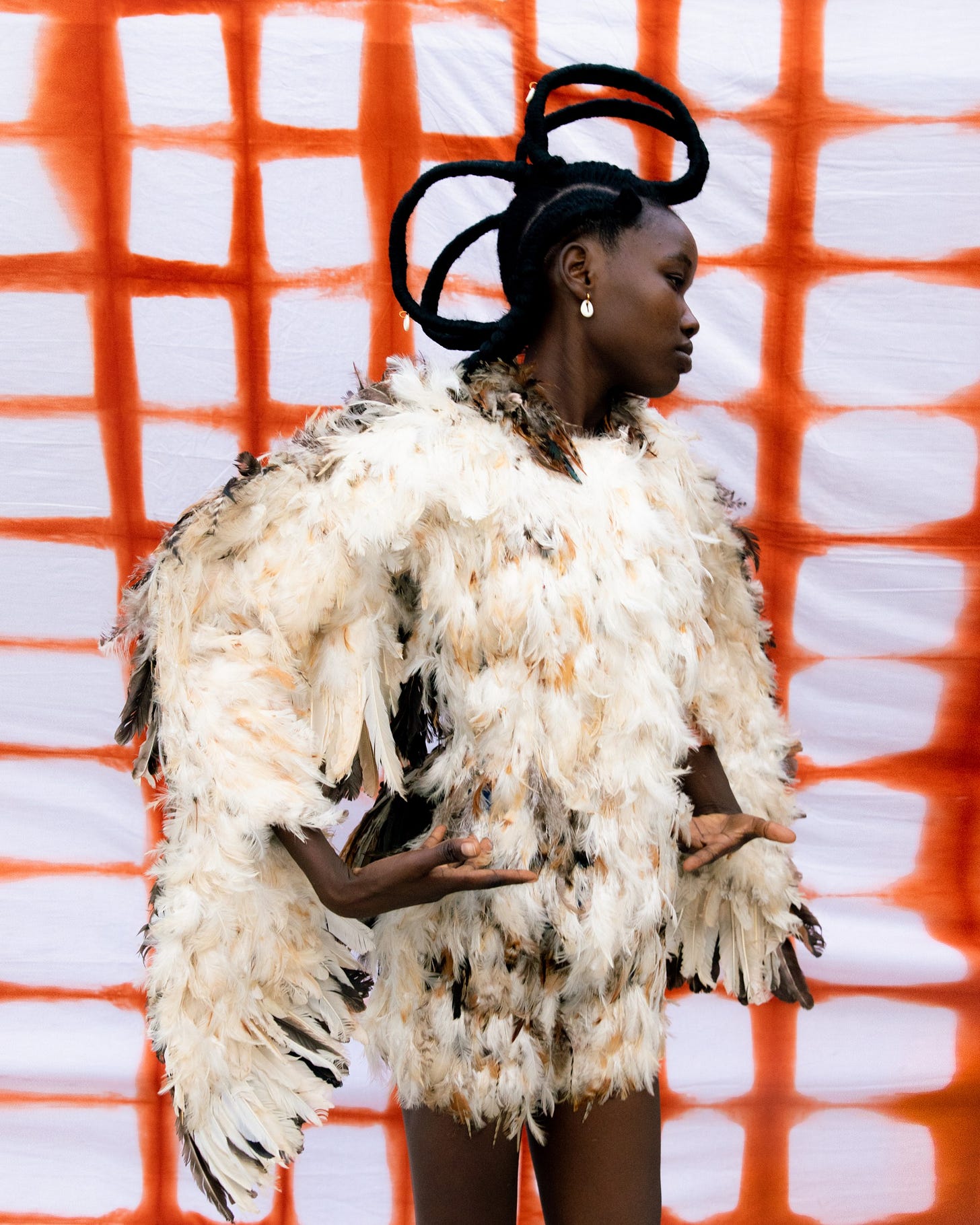🔅 Eastern DRC’s Never-Ending Crisis
A Celebration of Hair and History & What's The Half Moon Technique?

Good Morning from Uganda!
Rwanda-Backed Rebels in Goma: Another Chapter in the DRC’s Never-Ending Crisis
It’s one thing to “pop by” your neighbor’s place for sugar—quite another to roll in with armed rebels and seize a major city. But that’s basically what’s happening in Goma, a strategic trading hub in the Democratic Republic of Congo (DRC). Here’s the rundown, minus the diplomatic fluff:
Who’s Taking Over Goma?
M23 rebels—an armed group that’s become a recurring nightmare for the DRC since the early 2010s.
They’re allegedly backed by Rwanda, whose government denies it but whose fingerprints keep showing up everywhere. (Cue an awkward shrug from Rwanda's officials.)
Why Do They Want Goma?
Goma is a sprawling city of 2 million right on Rwanda’s border. Strategic? Check. Resource-rich? Double-check. The city is near valuable mineral deposits like tantalum (used in phones, computers, etc.).
Rwanda sees the region as a security threat because some Hutu militias—linked to the devastating 1994 Rwandan genocide—are still camped out in eastern DRC.
But if you’re cynical, there’s also a big financial incentive: Rwandan exports of minerals (often suspected to be Congolese in origin) bring in over a billion dollars a year.
Regional Flashback
The DRC’s been fighting one conflict or another since the mid-1990s, partly due to the aftermath of the Rwandan genocide. Rebels, militias, and foreign troops swirl around in a stew of too many armed groups to keep track of.
Millions have died or been displaced over the decades—so any talk of “new conflict” is basically a horrifying déjà vu.
What’s the International Community Doing?
A decade ago, when M23 first seized Goma (2012), the West slapped Rwanda on the wrist, and President Paul Kagame stepped back.
Fast-forward to now: Rwanda is a big shot on the continent (they’ve got peacekeepers everywhere and help “contain” the Russian Wagner group in places like the Central African Republic). They’re also crucial to major Western-run gas projects in Africa as in Mozambique.
Thus, significant condemnation (or sanctions) from world powers have been mostly quiet—until M23 marched right into Goma. France and the UK have been notable in scolding Rwanda at the UN.
There’s talk of an East African summit in Nairobi to defuse the tension. Kenyan President William Ruto wants a meeting ASAP with DRC’s Félix Tshisekedi and Rwanda’s Kagame.
Is a Full-Blown Regional War Coming?
Probably not. Rwanda’s military is stronger and better funded than the DRC’s, so that mismatch might keep things from spiraling into the kind of multi-nation meltdown we saw in the ‘90s.
But daily life in Goma is chaotic. Sporadic fighting continues, and tens of thousands are fleeing. The DRC’s eastern region remains a tangle of local militias, foreign troops, and warring interests.
Roots of Imagination: A Celebration of Hair, History, and Togo's Youth
Hair is never just hair, is it?
It’s a story, a symbol, and a statement. In Roots of Imagination, Malaika Nabila and Delali Ayivi take us on a visual and cultural journey through Togo’s intricate relationship with hair and identity, unearthing the forgotten artistry of traditional hairdressing while paying tribute to the creativity of today’s youth.
Through their platform TogoYeye ("New Togo" in Ewe), Nabila and Ayivi explore the generational ties encoded in Togolese hairdressing. Their project breathes life into traditional styles at risk of extinction due to the rise of mesh braiding and chemical straighteners.
What’s more, unlike the posed portraits of classic West African studios, Roots of Imagination unfolds on the streets of Lomé. The city itself becomes a canvas, with its kaleidoscope of painted walls, bustling beaches, and vibrant colors serving as the perfect backdrop.
Each frame celebrates the collision of traditional hairdressing with modern Togolese fashion, blending nostalgic techniques with the contemporary designs of five up-and-coming Lomé designers.
At its core, Roots of Imagination is a love letter to the bold individuality and collective innovation of Togolese youth. It’s about identity, hope, and the limitless potential of a generation shaping their future, and we think you might like it.
Hair is never just hair.
It’s a story, a symbol, and a statement. In Roots of Imagination, Malaika Nabila and Delali Ayivi take us on a visual and cultural journey through Togo’s intricate relationship with hair and identity, unearthing the forgotten artistry of traditional hairdressing while paying tribute to the creativity of today’s youth.
Through their platform TogoYeye ("New Togo" in Ewe), Nabila and Ayivi explore the generational ties encoded in Togolese hairdressing. Their project breathes life into traditional styles at risk of extinction due to the rise of mesh braiding and chemical straighteners.
What’s more, unlike the posed portraits of classic West African studios, Roots of Imagination unfolds on the streets of Lomé. The city itself becomes a canvas, with its kaleidoscope of painted walls, bustling beaches, and vibrant colors serving as the perfect backdrop.
Each frame celebrates the collision of traditional hairdressing with modern Togolese fashion, blending nostalgic techniques with the contemporary designs of five up-and-coming Lomé designers.
At its core, Roots of Imagination is a love letter to the bold individuality and collective innovation of Togolese youth. It’s about identity, hope, and the limitless potential of a generation shaping their future, and we think you might like it.
The Half Moon Technique: Reviving a Forgotten Desert Farming Hack

Imagine turning arid land into a thriving farm—without massive irrigation systems or costly interventions. In a world grappling with water scarcity, a centuries-old method called the half moon technique is making waves by doing just that.
No, it’s not a lunar phase. These half moons are shallow, crescent-shaped pits dug into dry soil. Their purpose is to trap and store rainwater, redirecting it to nurture crops, trees, and other vegetation. The brilliance of the design lies in its simplicity.
These earthworks slow water runoff, reduce soil erosion, and allow rain to seep deep into the ground. Over time, they even help replenish the water table, creating a more sustainable environment.
A Desert Renaissance
In parts of Africa, where this technique is being rediscovered and scaled, the results are staggering. Once-barren land is now yielding crops like millet and sorghum. Trees are thriving, biodiversity is returning, and local communities are gaining a lifeline in regions that once seemed inhospitable.
Farmers like Ibrahim, who live in the Sahel region, report dramatic improvements. His once-parched land now produces enough food for his family—and even a surplus to sell at market. “The half moons have brought life back to our soil,” he says.
With erratic rainfall and rising temperatures threatening global agriculture, affordable, low-tech solutions like this one are critical.
As climate experts scramble for scalable solutions, the half moon reminds us of the value of indigenous knowledge. These techniques, honed by generations, often hold the key to resilience in the face of environmental challenges.
So, while billion-dollar desalination plants and tech-heavy solutions dominate headlines, sometimes the best answers are found in the wisdom of the past…
Food for Thought
“One cannot be in debt and still talk big.”
— Nigerian Proverb





